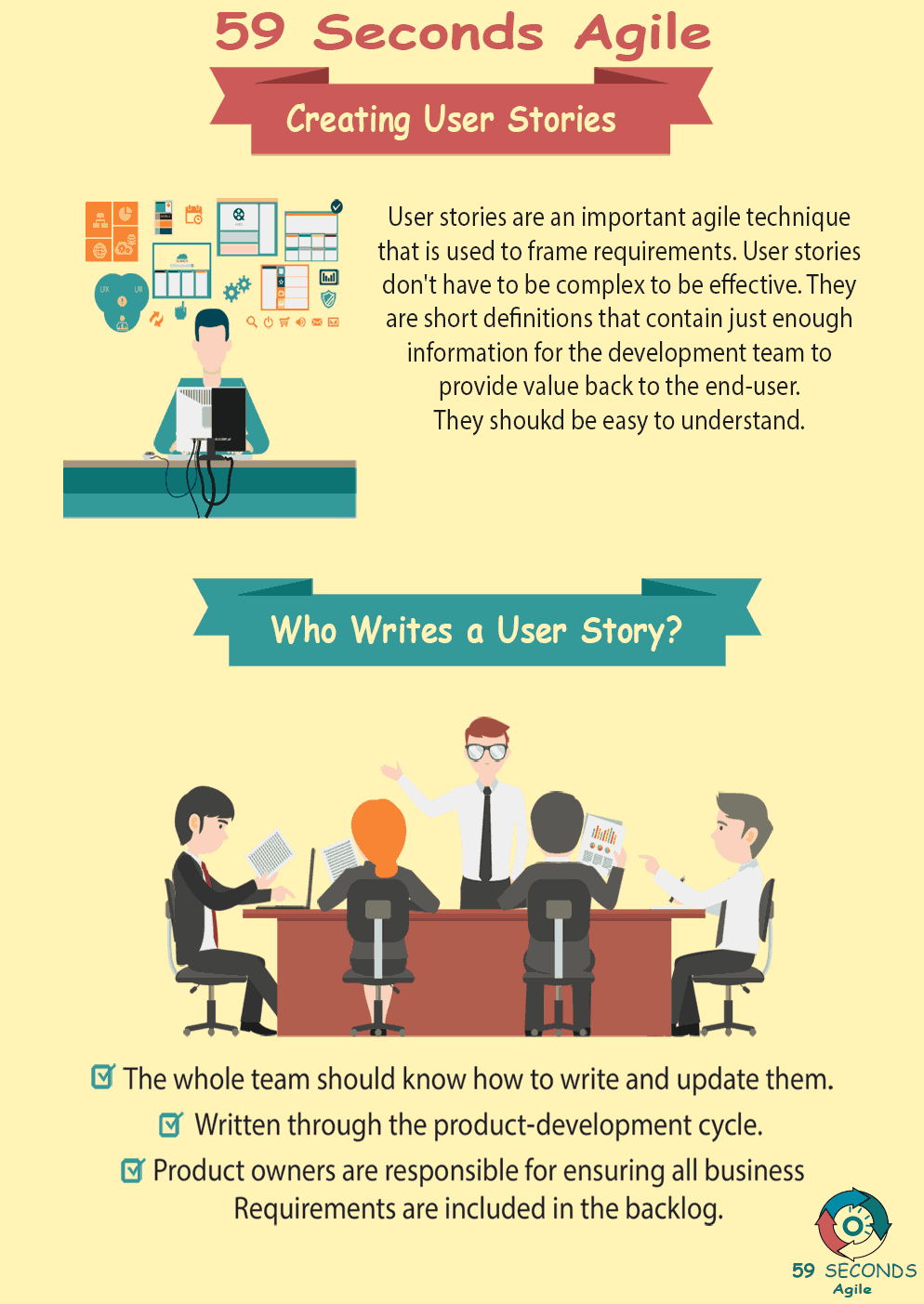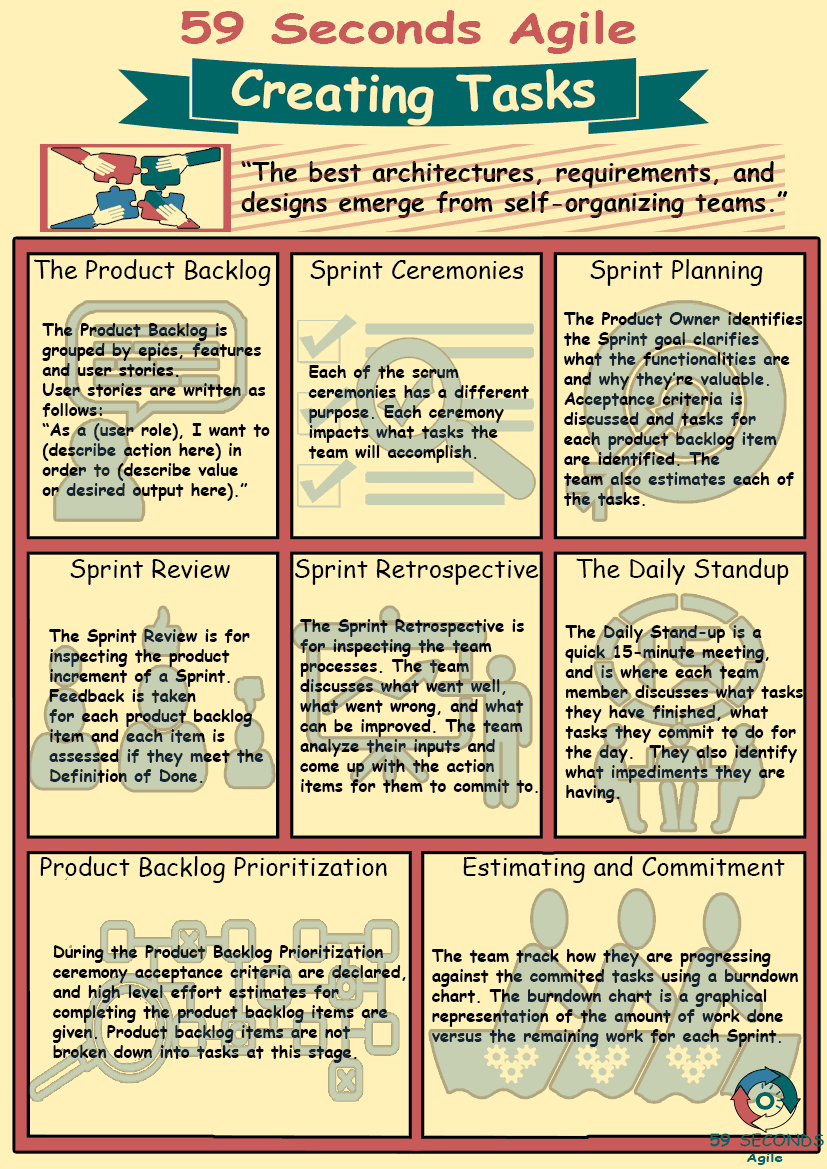This article looks to discuss ‘User Story Creation Tools’. It provides an introduction to creating user stories starting with who creates the user stories and how to write a good user story.
Agile User Stories and Tasks
A 59 Seconds Agile Training Video
Creating User Stories for Scrum Masters
A 59 Seconds Agile Article
User Stories are an integral part of the agile development process. They are an important agile technique that is used to frame requirements needed for product functionality. User stories don’t have to be complex to be effective. In fact, they should be simple, short definitions that contain just enough information for the development team to provide value back to the end-user. They should be easy to understand and represent the collaborative nature of agile. They should be used as more of a collaborative tool than as an actual documentation of the requirement.

What does that mean? Essentially user stories are important pieces of agile development because they provide a way for development teams, scrum masters, and product owners to embody agile values, not because of some complex requirement documentation.

User Story Creation Tools: So Who Writes a User Story?
Since user stories should be used as an agile tool in a collaborative manner, the whole team should know how to write and update them. User Stories are not all written at the onset of a project but instead are written through the product-development cycle. This fluid nature makes it important that all team members are up to date on how to write a good user story.
Initially, product owners should write the user story and make sure the requirements needed to deliver value back to the customer is detailed. Since product owners bridge the gap between the customer and the development team, it is important they are involved to make sure important business requirements are included. Once the product owner drafts out the user stories, the rest of the team should get involved to flesh out the rest of the requirements and come up with a plan to implement the user stories. Scrum Masters can play an important role in creating the user stories.
Our Favourite Agile Books
We found these books great for finding out more information on Agile Scrum:
User Story Creation Tools: So Who Writes a User Story?
Since Scrum Masters should be knowledgeable in all things dealing with the scrum processes, they can be good at limiting the scope of a user story so that it doesn’t include too much for the development team to handle. Therefore, a collaborative approach is best for creating good user stories.
User Story Creation Tools: How Do You Create a Good User Story?
Writing user stories is often not hard. However, writing good user stories can be. User stories should tell a story and should help facilitate the development of the product without being too complex or simple. Taken together, they create the product backlog which serves as the requirement document needed for the project.
User Story Creation Tools: A good user story should INVEST:
Independent. A good user story should be independent of other user stories. The more independent user stories are from one another, the better and easier it is to change things down the line. While this is not always possible, often splitting or combining them will solve the problem.
Negotiable. This means that the user story should allow for some discussion later. Things should be able to be negotiable and flexible in nature. Putting in too much detail at the onset will make discussion harder later on.
Prev <— Continue Reading —> Next
The Agile User Stories and Tasks
A 59 Seconds Agile Video Animation
Prev <— Continue Reading —> Next
User Stories Applied
A 59 Seconds Agile Book Review
User Stories Applied by Mike Cohn is one of our favourite books on Agile User Stories. The book starts with an overview into user stories, and details what a user story is and the different aspects of them. He then discusses how to go about writing a user story, and provides details of the INVEST criteria that can be used to determine if the story is meeting all of its objectives. Next Mike gives an in depth discussion of who user stories are written for and where to begin when gathering the details for them. The book then discusses acceptance testing user stories, including how to go about specifying these criteria and the responsibilities of the development team and customers during this process.
Prev <— Continue Reading —> Next
The Agile Frameworks
A 59 Seconds Agile Infographic


